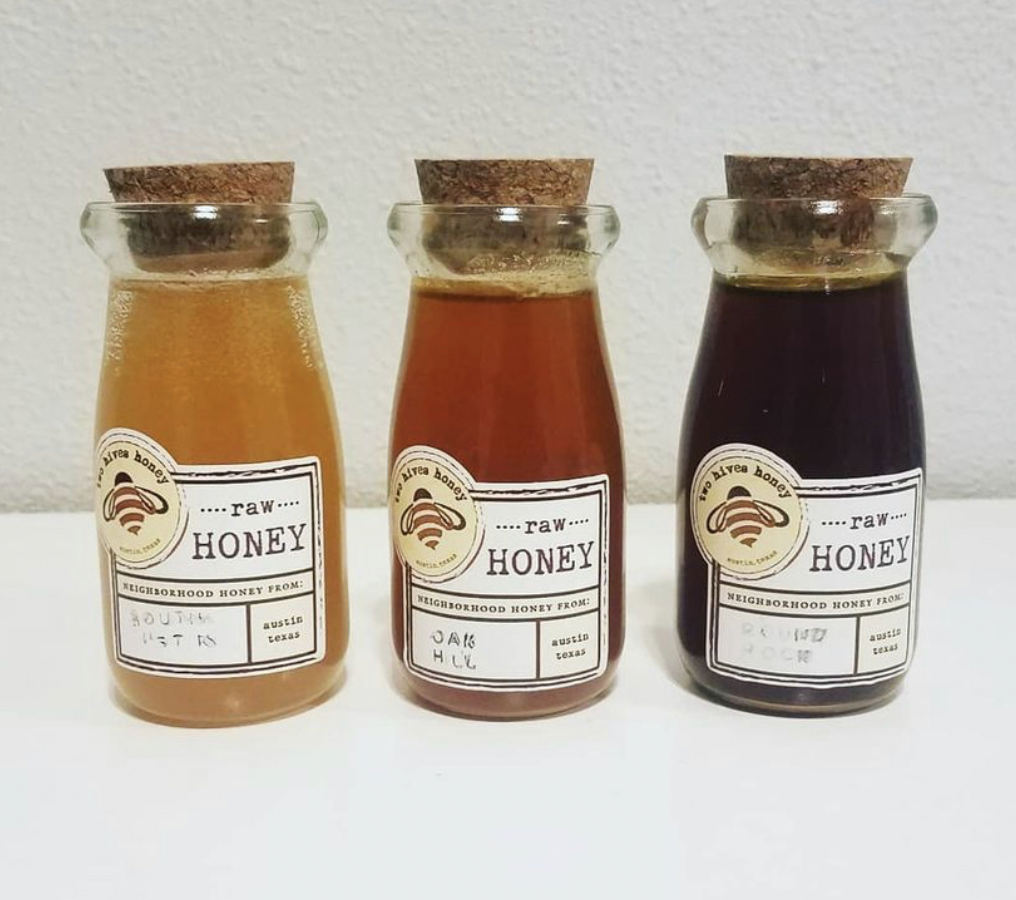What’s the flavor of your honey?

Over the last year I’ve come to realize that my favorite part of my job is the creative aspect, such as coming up with new products and designing new labels and packaging. To help feed that creative need, we started doing a very limited honey infusion available only at the Honey Ranch each month. In the past I’ve intentionally chosen not to do many infusions because raw honey, when harvested and jarred in small batches, shines all on its own, without a need for extra additions of flavors from us. Our goal is to make sure you get the opportunity to appreciate the natural rainbow of colors, flavors, and textures that real honey can bring. But today I want to share more with you on how honeys get their unique flavors (all without human intervention) and also share how infusions, where a beekeeper does intervene to add additional flavors, are created.
A Honey’s Natural Flavor
First, a few basics. Honey bees gather nectar from flowers to produce honey. Each flower nectar is unique in its color, flavor, and even consistency. These different features will determine the characteristics of the honey. The reason this is new to so many is because this is not indicative of most of the honeys you find at the grocery store. Most all the honey on the shelf is blended honey, which means these honey packing companies buy honey from a lot of beekeeping operations, often across different countries. The honey is all mixed together, or blended, and what results is the ubiquitous (and may I say, bland) honey flavor many have come to expect. Further, the honey has been heavily heated and filtered, further diminishing its quality.
In contrast, we harvest all of our honey in small batches, keeping honey from specific neighborhoods and areas harvested at different times separate as we jar. What results is a honey that tells the story of the flowers that were blooming at that time and place.
For example, the three honeys in the above picture were harvested (from left to right) in the spring from North Austin, in the spring from the Oak Hill neighborhood, and in the fall from Round Rock, Texas. We didn’t do anything to these honeys–the different colors and flavors are simply because different plants were blooming in each of these areas.
Honey Infusions
On the other hand, infusions are created by a beekeeper adding flavor in some way after the honey is harvested. Infusions are achieved in one of two ways–either through time or heat. Most infusions are made by adding artificial flavors or oils. At Two Hives, we only use natural botanicals and ingredients to infuse our honey, and because we want to ensure our honey stays raw, we do not use the heat method. Our process means that our infusions aren’t as strong as some you may find elsewhere, but the subtleness adds a gentle flavor infusion without covering up the beautiful and natural characteristics of the honey.
Because honey labeling in this country is so poor, it can often be confusing as to what you are buying. For example, if you see a jar labeled ‘lavender honey’, it can mean that the honey was made by bees collecting nectar only from lavender flowers, but it probably means that the honey was infused with lavender flowers or oils after the harvest. This is one more reason why buying from a beekeeper is important: you can ask questions to understand the story of the honey and how it was harvested.
Looking to try a little of our own honey magic? Check out our online shop or come visit us at the Honey Ranch to see what our bees (and beekeepers) have been cooking up!
For the bees,
Tara Dawn



Leave a Reply